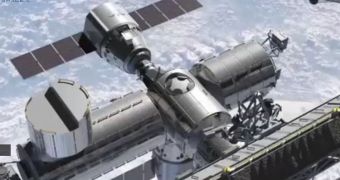Officials at the Hawthorne, California-based Space Exploration Technologies Incorporated (SpaceX) announce that their Dragon spacecraft will launch for the International Space Station (ISS) on April 30.
This particular mission – which combined two test flights the capsule should have carried out under its Commercial Orbital Transportation Services (COTS) with NASA – was originally supposed to launch last year, but technical difficulties made that impossible.
There is a lot at stake here, analysts say. The Dragon is the first private spacecraft to be launched to the ISS. A lot hinges on the balance here, since other companies are also developing similar vehicles.
If anything goes wrong during this attempt, they may be prevented from going anywhere near the football field-sized orbital facility ever again, Space reports. SpaceX is full aware of its responsibility.
On March 15, representatives from the company announced that a launch data had finally been settled. The Dragon spacecraft will take off aboard a SpaceX Falcon 9 delivery system from the Cape Canaveral Air Force Station (CCAFS), in Florida, at 2:22 pm EDT (1622 GMT).
The April 30 flight will not be a test. The spacecraft will haul cargo to the orbiting complex, in a bid to demonstrate that private spacecraft can successfully resupply the facility. This is the main requirement of the COTS program anyway.
Companies such as Boeing and Orbital Sciences Corporation are developing their own spacecraft, and they, too, will have to demonstrate similar capabilities, if they want to benefit from NASA funding in the future. SpaceX is developing the Falcon 9/Dragon system with $1.6 billion from the space agency.
Dragon first launched to space in December 2010, during Falcon 9's second mission. The maiden flight for the medium-lift delivery system occurred in June 2010. Therefore, this April's launch will be the rocket's third flight and the capsule's second.
If the NASA/SpaceX collaboration is successful, then the company will most likely begin to convert the Dragon from a robotic cargo carrier to a manned spacecraft. Officials say that three or four astronauts could fit neatly inside the vehicle, Space reports.
SpaceX developed Dragon from the get-go in such a way that the capsule complies with all NASA safety directives for human spaceflight. Therefore, the transition should not be so difficult.

 14 DAY TRIAL //
14 DAY TRIAL //